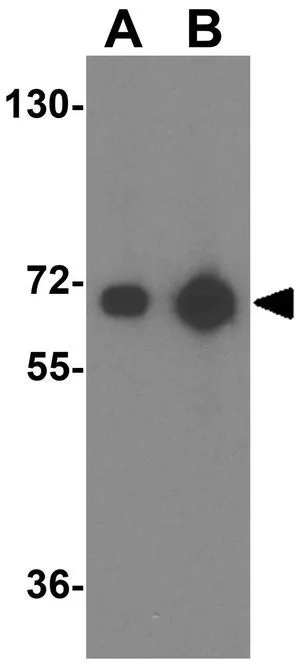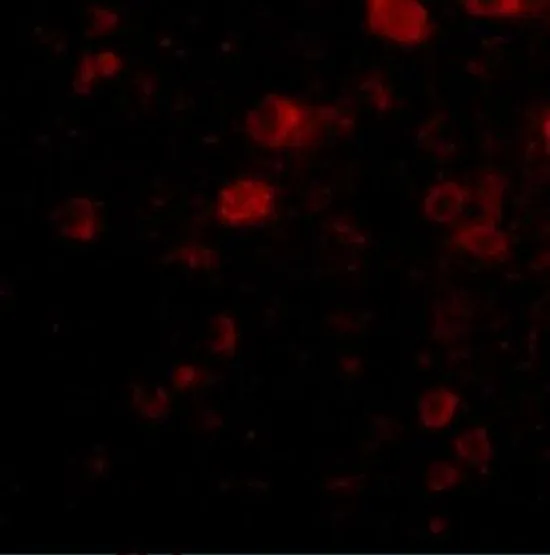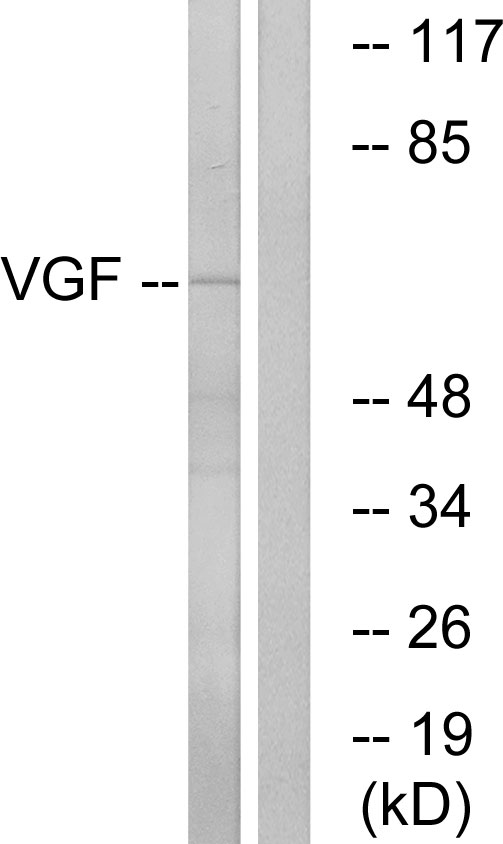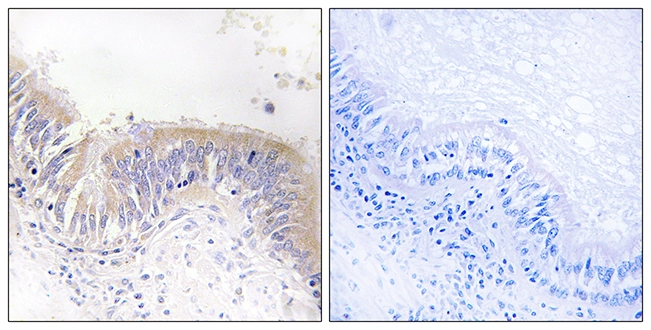
IHC-P analysis of human brain tissue using GTX85398 VGF antibody. Working concentration : 5 microg/ml
VGF antibody
GTX85398
ApplicationsWestern Blot, ELISA, ImmunoHistoChemistry, ImmunoHistoChemistry Paraffin
Product group Antibodies
TargetVGF
Overview
- SupplierGeneTex
- Product NameVGF antibody
- Delivery Days Customer9
- Application Supplier NoteWB: 1 - 2 microg/mL. IHC-P: 5 microg/mL. *Optimal dilutions/concentrations should be determined by the researcher.Not tested in other applications.
- ApplicationsWestern Blot, ELISA, ImmunoHistoChemistry, ImmunoHistoChemistry Paraffin
- CertificationResearch Use Only
- ClonalityPolyclonal
- Concentration1 mg/ml
- ConjugateUnconjugated
- Gene ID7425
- Target nameVGF
- Target descriptionVGF nerve growth factor inducible
- Target synonymsSCG7, SgVII, neurosecretory protein VGF, neuro-endocrine specific protein VGF
- HostRabbit
- IsotypeIgG
- Protein IDO15240
- Protein NameNeurosecretory protein VGF
- Scientific DescriptionVGF was initially identified as a rapidly regulated gene product in nerve growth factor-treated PC12 cells. This protein is synthesized in neurons in the central and peripheral nervous system as well as in the pituitary, adrenal medulla, endocrine cells of the stomach, and pancreatic beta cells. VGF is thought to be involved in organism energy balance and regulation of homeostasis as mice lacking this gene show deficits in these areas. More recent results suggest that VGF is upregulated by brain-derived neurotrophic factor (BDNF) and can stimulate the proliferation of hippocampal progenitor cells and produce antidepressant-like behavioral effects, suggesting that this pathway may be a suitable target for therapeutic treatments.
- Storage Instruction-20°C or -80°C,2°C to 8°C
- UNSPSC12352203









